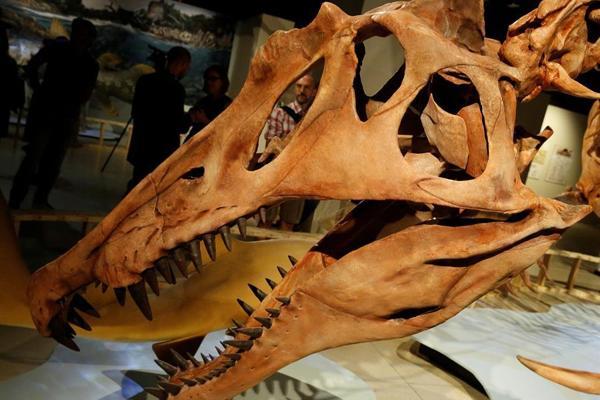Huge African dinosaur thrived in the water
WASHINGTON - Reuters


The huge African predator Spinosaurus spent much of its life in the water, propelled by a paddle-like tail while hunting large fish - a “river monster,” according to scientists, that showed that some dinosaurs invaded the aquatic realm.
Scientists on April 29 announced the discovery of fossil bones from the tail of Spinosaurus in southeastern Morocco that provided a deeper understanding of the appearance, lifestyle and capabilities of the longest meat-eating dinosaur on record.
“Spinosaurus had a highly specialized tail - a propulsive structure that would have allowed this river monster to actively pursue prey in the water column,” said University of Detroit Mercy paleontologist and anatomist Nizar Ibrahim, lead author of the study published in the journal Nature.
Spinosaurus, which lived 95 million years ago during the Cretaceous Period, was a highly unusual dinosaur, and not just because of its staggering dimensions - up to 50 15 meters long and seven tons.
The anatomy of Spinosaurus had remained mysterious for decades after crucial fossils were destroyed during World War Two until the 2008 discovery of the Morocco skeleton, with the additional tail bones dug up since 2015.
Laboratory experiments in which a plastic model of the Spinosaurus tail was attached to a robotic swimming device showed that the tail could move laterally to create thrust and power the animal through water like a crocodile, said Harvard University fish biologist and biomechanist George Lauder, a study co-author.
This indicates Spinosaurus terrorized rivers and river banks as a semi-aquatic animal, not merely wading into the water waiting for fish to swim by. It may have eaten huge fish, including sharks.
“This discovery overturns decades-old ideas that non-bird dinosaurs were restricted to terrestrial environments,” said Harvard University vertebrate paleontologist and biomechanist Stephanie Pierce, a study co-author. “So, yes, we believe that this discovery does indeed revolutionize our understanding of dinosaur biology.”
